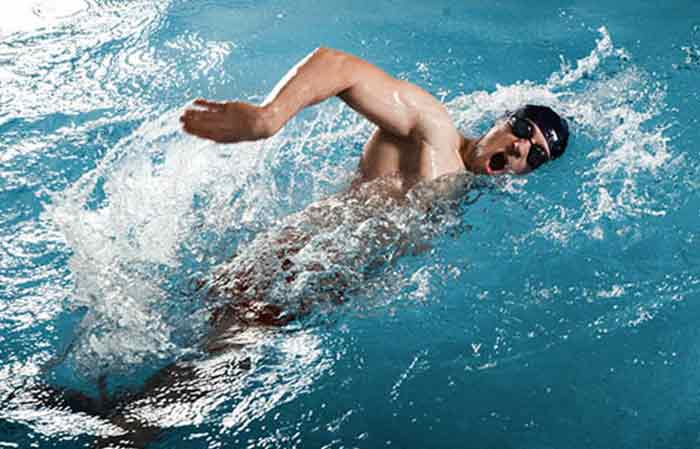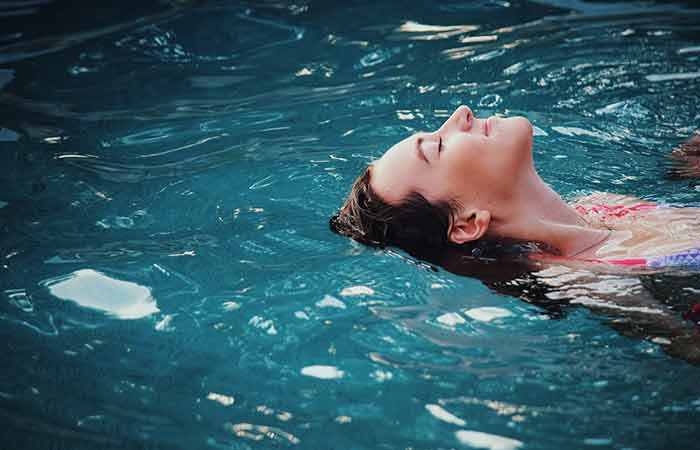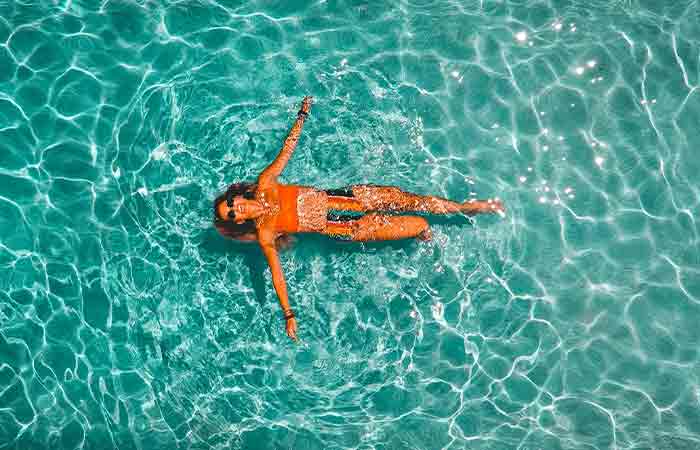How to Keep Water Out of Ears while Swimming
Swimming is an enjoyable and refreshing activity loved by many, but one common issue that swimmers often face is water getting into their ears. The sensation of water trapped in the ears can be uncomfortable and can lead to potential health concerns if left unaddressed.
You can keep water out of your ears while swimming by using accessories like earplugs, custom-fitted ear molds, swimming ear/headbands, and swim caps. Adopting alternative methods like swimming head high to keep their ears dry and free from water-related issues.
Inhere, find out how you can prevent water into your ears, how to remove the water if it gets in, and the importance of keeping your ears free of water while swimming.
Ways to Keep Water Out of Ears
Keeping water out of your ears while swimming may seem impossible, especially when submerged in pool water that exerts pressure on your ears. However, several accessories are available in the market that you can use to keep water out effectively.
Earplugs
Earplugs are designed to create a tight seal within the ear canal, preventing water from entering. They come in various types, including foam, silicone, and custom-molded earplugs.
Each type offers different comfort levels and effectiveness, but the silicone ones are much more effective than the rest. Among the best in the market are the Mack’s Pillow Soft Silicone Earplugs for adults and the Dam Swimming Ear Plugs for different ear sizes.
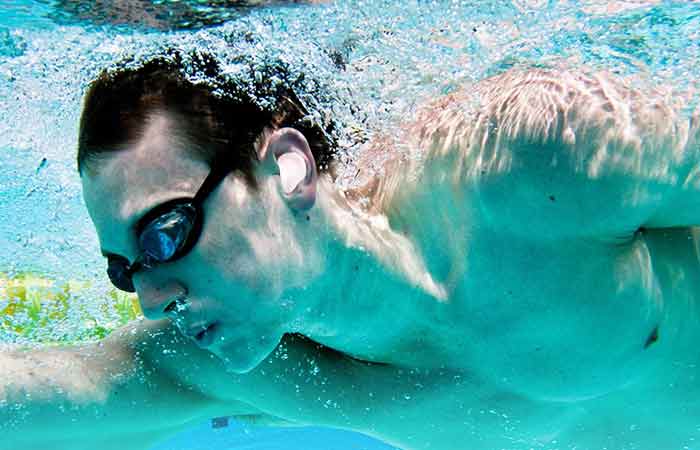
Headbands and Earbands
You can use a headband in conjunction with earplugs to hold them securely in place and offer additional protection. Headbands will cover your ears and keep water away from the ear canal. Aside from that, bands help to keep earplugs from falling out during swimming.
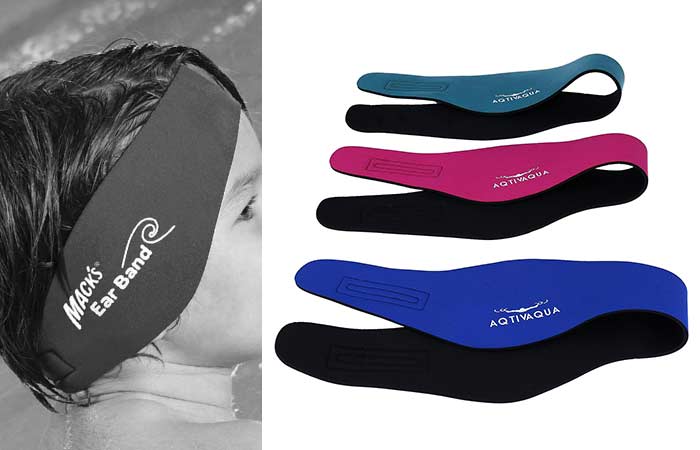
Custom-fitted Ear Molds
If you seek a more personalized solution, custom-fitted ear molds offer an excellent option. They are specialized earpieces made to fit an individual’s ear anatomy precisely.
Since they are custom-made according to your ear’s anatomy, they create a custom seal within the ear canal, providing a snug and comfortable fit. These molds are typically made from silicone or other soft materials.
Swim Goggles with Ear Plugs
Some swim goggles come with integrated ear cups or covers that create an added barrier against water seepage. These goggles provide a two-in-one solution for eye and ear protection. You can buy the Swim Goggles with Ear Plugs by Splaqua.

Swim Caps
While you cannot rely on most standard swim caps to fully keep water out of your ears, some cap styles have additional ear protection features; a flap that comfortably covers your ears. These caps minimize the amount of water that comes into contact with the ears and also help keep the earplugs, if you are wearing some, in place.

Other ways to keep water out without accessories
Besides relying on earplugs or other items placed in the ears, there are several natural techniques to keep water out of your ears while swimming. Here are some additional methods:
- Swimming head-high: Adjusting your swimming technique to swim while your head is slightly elevated while swimming can help minimize water entry into the ears. Keeping your head above water reduces the chances of water splashing into the ear canals.
- Avoiding rapid head movements: Minimize rapid head movements, especially when entering the water or during abrupt turns. Sudden head movements can cause water to splash into the ears, so maintaining controlled and steady head motions can help prevent water entry.
- Petroleum jelly or mineral oil: Though not effective as the methods mentioned above, applying a small amount of petroleum jelly or mineral oil around the ear opening can create a water-resistant barrier, reducing the chance of water entering the ears. However, be cautious not to apply these substances deep into your ear canal.
- Pre-swim ear rinses: Consider rinsing your ears with clean, fresh water from a shower or tap before entering the water. Moistening the ear canal can make it less susceptible to water absorption during swimming.
- Avoid inserting cotton, fingers, or tissues in the ears: Resist the temptation to put cotton, fingers, or tissues in your ears. These objects can push the water further into the ear canal and cause discomfort or even infection.
How to Remove Water from the Ears
Natural Methods:
To naturally remove water from the ears, you can try the following techniques:
- Tilting and shaking the head: One of the simplest ways to remove water from the ears is by tilting the head to the affected side and gently pulling on your earlobe. The aim is to allow gravity to help the water drain out of the ear canal. Don’t insert anything into the ear to prevent further pushing the water.
- Gravity-assisted techniques: Another effective method involves lying on the opposite side of the ear with water and remaining in that position for a few minutes. This allows gravity to pull the water out of the ear naturally. Afterward, gently tilting the head to the side and shaking it can further aid the process.
- Yawning or chewing: Yawning or chewing motions help equalize pressure in the ears and encourage water to come out.
- Blowing nasal compressions: Pinch your nostrils closed and gently blow air through your nose. This action can sometimes create enough pressure to dislodge water from the ear canal.
- Dry your ears with a towel: After swimming, use a soft towel to pat your ears gently and remove any excess water. Avoid inserting the towel or any object into the ear canal, as this can push the water further inside and potentially cause injury.
- Add more water: Adding more water to remove water might seem counterintuitive but can help alleviate water trapped in your ear. Lie on your side and gently fill the affected ear with water using a dropper. Wait for 5 seconds, then turn over with the ear facing down to allow the water to drain out. Alternatively, create warm steam by covering your head with a towel and leaning over a bowl of steaming hot water. Inhale the steam for 5-10 minutes, then tilt your head to the side to allow your ear to drain.
Using Ear-drying Solutions
- Over-the-counter options: Various over-the-counter ear drying solutions are available in pharmacies and drugstores. These solutions typically contain alcohol and acetic acid, which can help evaporate the trapped water in the ear canal. Make sure you follow the instructions on the label.
- Vinegar and alcohol: Some people prefer using homemade ear-drying solutions. One popular option is a mixture of equal parts of white vinegar and rubbing alcohol. Use a dropper to carefully place a few drops of the solution into the affected ear, and then tilt your head to drain the water out.
- Use a blow dryer: The heat from a blow dryer may help evaporate the water inside your ear canal. Turn on your blow dryer to its lowest setting then hold the hair dryer about a foot away from your ear and move it in a back-and-forth motion. While tugging down on your earlobe, let the warm air blow into your ear.
- Use hydrogen peroxide to dry and clean the ear canal: Hydrogen peroxide is an effective and safe option for keeping your ears clean and dry after swimming. Gently tilt your head to the side and pour a few drops of hydrogen peroxide into the affected ear. Let it sit for a few minutes, and then tilt your head back or use a cloth to catch any liquid that comes out.
Pro tip: While ear drying solutions can be helpful, it’s essential to use them carefully and avoid them if you have any ear injuries, infections, or perforations in the eardrum. In such cases, seeking medical advice from a healthcare professional is recommended.
Importance of Keeping Water Out
Keeping water out of your ears while swimming offers numerous physical, health, and mental benefits. These advantages include:
- Preventing swimmer’s ear: Water trapped in your ear’s canal creates a moist environment conducive to bacterial and fungal growth, leading to painful ear infections known as swimmer’s ear. If you’re prone to this infection, keeping water out can help reduce the risk of developing it.
- Preserving hearing health: Prolonged exposure to water in the ears can result in temporary hearing impairment due to moisture. By keeping the ears dry, swimmers can help maintain their hearing health and avoid potential hearing-related issues.
- Preventing balance issues: Water trapped in the ears can disrupt the delicate balance mechanisms in the inner ear, leading to dizziness and balance problems. Keeping your ears dry helps prevent such balance issues during and after swimming.
- Enhancing swimming performance experience: Water-filled ears can be uncomfortable and distracting, affecting the overall enjoyment of your swimming sessions. Keeping your ears dry allows swimmers to focus on their strokes and perform without discomfort.
- Reducing the risk of vertigo: Some individuals may experience a condition known as benign paroxysmal positional vertigo (BPPV), triggered by specific head movements. Water in the ears can worsen this condition, leading to vertigo.
- Preventing allergic reactions: Water entering sensitive ears may trigger allergic reactions, leading to inflammation and discomfort.
Additional Tips for Ear Care while Swimming
Here are some tips to keep your ears healthy while swimming.
Avoid swimming in dirty water
To protect your ears while swimming, it is important to avoid swimming in dirty water. Dirty water can contain bacteria and other harmful substances that may increase the risk of ear infections.
Stick to clean and well-maintained swimming pools or natural bodies of water that are regularly tested for safety.
If you’re unsure about the cleanliness of the water, it’s best to find another place to swim to keep your ears safe and healthy.
Maintain proper ear wax hygiene
To keep your ears healthy while swimming, it’s important to maintain proper ear wax hygiene. Ear wax serves as a natural barrier that helps protect the ear canal from water and infection.
However, excessive buildup of ear wax can lead to blockages and increase the risk of water getting trapped in the ears.
To maintain proper ear wax hygiene, avoid using cotton swabs or other objects to clean your ears, as this can push the wax further into the canal. Instead, let your body’s natural processes take care of removing excess wax.
If you experience any discomfort or notice an excessive amount of earwax buildup, consult with a healthcare professional for appropriate guidance and treatment options.
FAQs
How do Olympic swimmers keep water out of their ears?
Olympic swimmers often use specialized, custom-fitted earplugs to keep water out of their ears while swimming. These earplugs create a tight seal and prevent water from entering the ear canal. They also cover the earplugs with a swim cap to increase efficiency.
Will water come out of my ear naturally?
Yes, in most cases, water will come out naturally from the ears. Tilting the head and letting gravity take its course can help water drain out of your ear canal.
What happens if water gets in my ear when swimming and stays for too long?
If water gets in the ear while swimming and doesn’t come out naturally, it can lead to discomfort, temporary hearing loss, and an increased risk of ear infections (swimmer’s ear), especially if bacteria was present in the water. Sometimes, you may require gentle maneuvers or ear-drying methods to remove the trapped water but this may require treatment from a healthcare professional.

